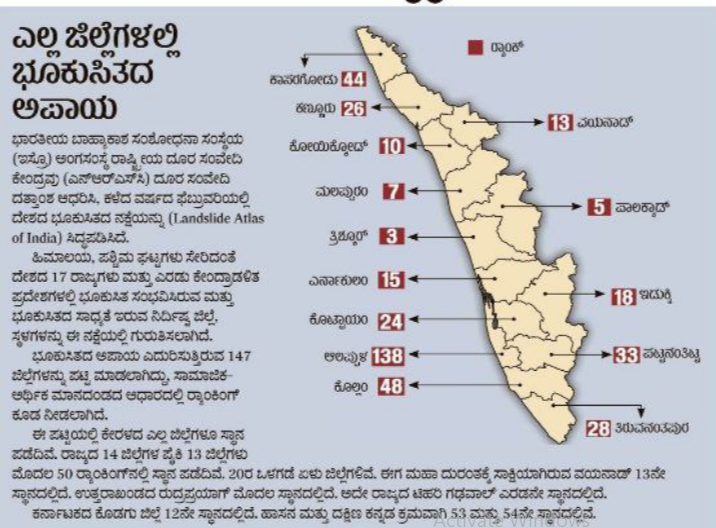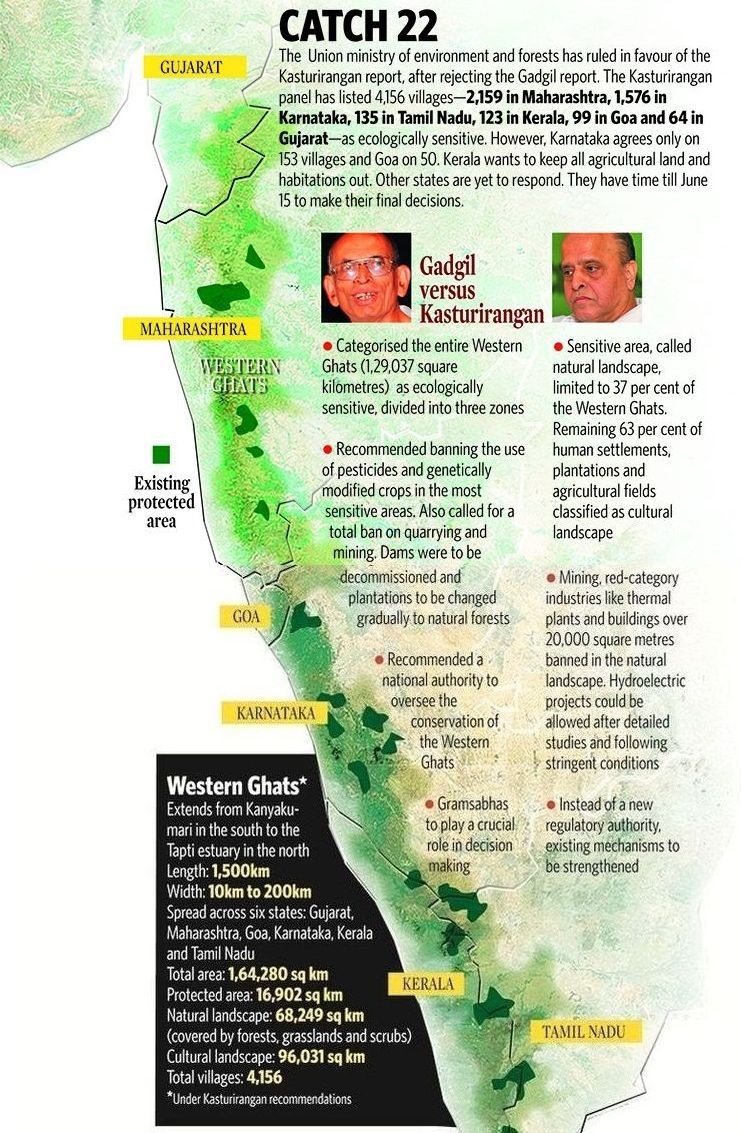1.One-time settlement scheme’ boosts property tax collection
Context:
- After the implementation of the onetime settlement (OTS) scheme for property tax, 1.07 lakh property owners have utilized it, paying the Bruhat Bengaluru Mahanagara Palike (BBMP) ₹184.77 crore in dues till July 29.
- As of April 1, the number of properties with outstanding tax dues was 3,95,250.
- The total amount of tax demanded from these defaulters stood at ₹733.71 crore.
- By July 29, the number of properties with outstanding tax dues had reduced to 2,87,906. Correspondingly, the total tax demand from these properties decreased to ₹548.94 crore.
One time settlement scheme in Karnataka
- The scheme offers a 100% waiver on interest and a 50% reduction on penalties. The Bruhat Bengaluru Mahanagara Palike (BBMP) council office. Bengaluru: The BBMP has decided to keep its revenue offices open until 9 pm on July 31, the last date for utilizing the one-time settlement scheme for property tax defaulters.
2. Kerala, which opposed Kasturi Rangan's report.
Context:
- A committee headed by Prof. Madhav Gadgil, appointed by the Union Ministry of Environment and Forests to study and report on the preservation of ecologically sensitive areas of the Western Ghats spread across the states of Gujarat, Maharashtra, Goa, Karnataka,
- Tamil Nadu, and Kerala, was established in 2011. Another committee headed by Prof. Kasturi Rangan submitted its report in 2013. The Kerala government had opposed it.
About Recommendations Of The Kasturi Rangan report:
- Kasturirangan report recommended banning mining, quarrying, thermal power plants, township projects, and other ‘red industries’ in the Eco-Sensitive Area (ESA)
- The report states that only 37% of the total area of the western Ghats (60000 sq km) be considered under Ecologically Sensitive Areas (ESA).
- The report states that mining, quarrying and sand mining in Ecologically Sensitive Areas should be completely banned.
- Out of this, 20,668 sq km of the area fallsin Karnataka covering 1,576 villages.
- The 39 sites are located across the Western Ghats and distributed across the states (Kerala 19), Karnataka (10), Tamil Nadu (6) and Maharashtra (4).
- Karnataka is opposed to implementation of Kasturirangan report on Western Ghats
About Eco-Sensitive Areas:
- Eco-Sensitive Areas (ESAs) are located within 10 kms around Protected Areas, National Parks and Wildlife Sanctuaries.
- ESAs are notified by the Ministry of Environment, Forest and Climate Change (MOEFCC) under Environment Protection Act 1986.
- The basic aim is to regulate certain activitiesaround National Parks and Wildlife Sanctuaries so as to minimize the negative impacts of such activities on the fragile ecosystem encompassing the protected areas.
3.E-asset new software Increase confidence in Panchayat
Context:
- The surge in informal settlements in rural and suburban areas over recent decades highlights a pressing issue in land management.
- Real estate entrepreneurs are exploiting weaknesses in the e-property registration system to sell plots without proper land conversion and map approvals.
- This regulatory evasion has led to widespread unauthorized development, revealing significant flaws in property documentation
Highlight:
- In July 2012, the High Court had directed the state government to regulate the registration of such properties to prevent the sale of plots in illegally constructed barangays without proper permission.
- The system of issuing e-property documents for non-agricultural properties under Gram Panchayats was implemented in June 2013.
- This is why the Department of Rural Development and Panchayat Raj, which had developed software, created an e-property record through it and gave it to the concerned people.
What is a PRI?
- Panchayati Raj Institution (PRI) is a system of rural local self-governmentin India.
- Local Self Government is the management of local affairs by such local bodies who have been elected by the local people.
- PRI was constitutionalized through the 73rdConstitutional Amendment Act, 1992 to build democracy at the grass roots level and was entrusted with the task of rural development in the country.
- In its present form and structure PRI has completed 26 years of existence.
- The committee suggested a three-tier PRIs, namely, Grama Panchayats (GPs) at the village level, Panchayat Samiti (PSs) at the block level, and Zilla Parishad (ZPs) at the district level.
- The most important among them are the Hanumantha Rao Committee (1983), G.V.K. Rao Committee (1985), L.M.Singhvi Committee (1986) and the Sarkaria Commission on Centre-State relations (1988), P.K. Thungan Committee (1989) and Harlal Singh Kharra Committee (1990).
The G.V.K. Rao Committee (1985) recommended making the “district” as the basic unit of planning and also holding regular elections while the L.M.Singhvi committee recommended providing more financial resources and constitutional status to the panchayats to strengthen them.





